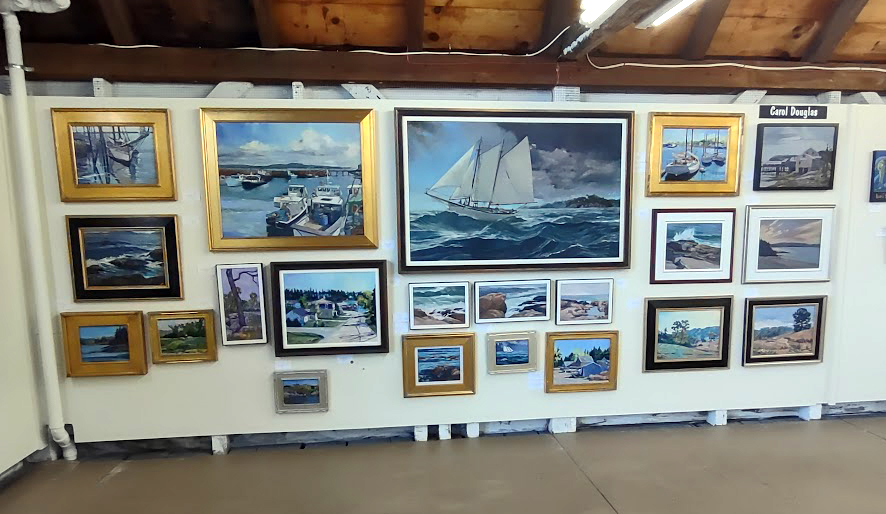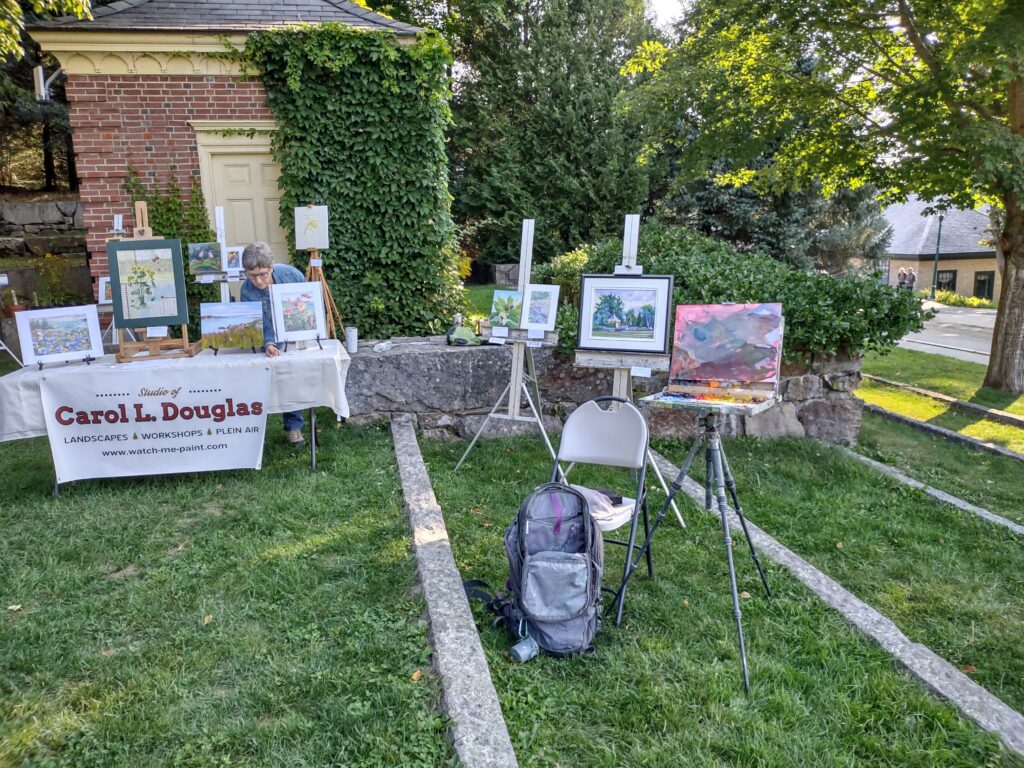
Charge by the inch, of course. (I’m not kidding.)
This is the most emotionally-fraught question I hear from beginning painters. You can simplify the issue greatly by setting aside your emotional involvement with your art and basing your selling price on the size of the piece and your selling history.
If you’ve never sold anything before,there is no way to deduce a selling history: only the market can do that. But most beginners price their work too cheaply. That can actually hinder sales. Nobody else is going to value what you don’t value yourself.
Survey other artists with the same level of experience and set your first prices in line with theirs. Experience and competence are not synonymous. Most artists are terrible judges of their own work, seesawing between believing they’re geniuses and believing they’re hopeless. Such a subjective judgment should never guide pricing.
It’s not just brushwork that sets market price. Check out the regional market in which your competitors are selling, their affiliations, and their history of shows and sales. Be honest with yourself. Thomas Kinkead may have been a lousy painter, but his canvases are worth many times what mine are. He was an extremely talented marketer who created a nationwide niche for his work.
I believe in giving paintings to non-profits for their charitable auctions. It’s a good way to leverage your talent to help others. It gives exposure and a sales history, and if you err in the pricing, it’s not a fatal mistake. (But don’t do it for a tax deduction; these donations are generally not deductible.)

Once you’ve sold something—to a friend or family member, or at a charitable auction—you have a sales history, albeit an imperfect one. From this, you can extrapolate a pricing structure.
Let’s say you gave an 8X10 watercolor of the Old Red Mill to your local historical society, which turned around and sold it for $100. Great! You have a sales history from which to calculate prices. Just figure out the value per square inch and calculate from there.
Knowing that many artists are arithmetic impaired, I’m going to spell this out for you. Square inches=height times width, so your 8X10 painting is 80 square inches. Dividing the $100 selling price by 80 gives you a value of $1.25/square inch.
So to use this to calculate other sizes, you’d end up with:
6X8: $60
9X12: $135
11X14: $240
12X16: $315
Now, on the edges, I might adjust a little, since charging $15 for a 3X4 painting would be absurd, and charging $1500 for a 30X40 would surpass what anyone would pay for an untried painter. But it’s a formula I’ve used successfully for years. Framing costs scale up and down in the same way, and the bigger the painting, the more work it generally represents (unless you’re playing games and your large canvas is merely a schmear).
I would not set my prices in stone on the basis of one sale, of course. You should continuously update your prices based on your average sale prices for the prior year or two. The goal of every artist ought to be to sell at constantly rising prices. When you find yourself “painting on a treadmill” to have enough work for your next show, it’s definitely time to charge more. Each time you show, your work will be better known, and over time your prices will rise.
When I first started painting, I used to factor in two things I’ve since learned are totally irrelevant: how much time I’d spent, and how good I thought it was. Frequently I’ll struggle with a canvas for months, working out a problem I don’t even know I have, and the next painting will be faster, fresher, and more successful. You’ll also eventually realize you’re not the best judge of your own work. The work you think is brilliant may ring nobody else’s bells, while the painting you considered tossing may actually sell very quickly.
My 2024 workshops:
- Painting in Paradise: Rockport, ME, July 8-12, 2024.
- Sea & Sky at Schoodic, August 4-9, 2024.
- Find your authentic voice in plein air: Berkshires, August 12-16, 2024.
- Art and Adventure at Sea: Paint Aboard Schooner American Eagle, September 15-19, 2024.
- Immersive In-Person Workshop: Rockport, ME, October 7-11, 2024.
